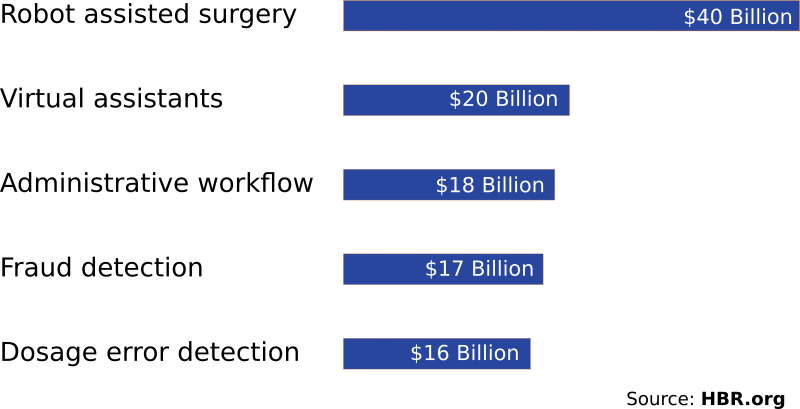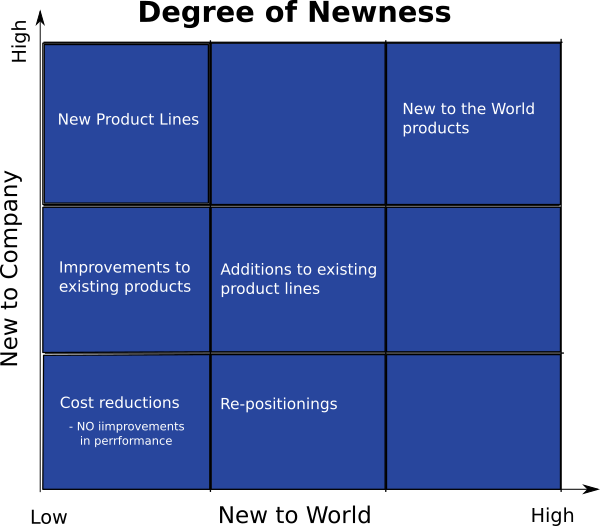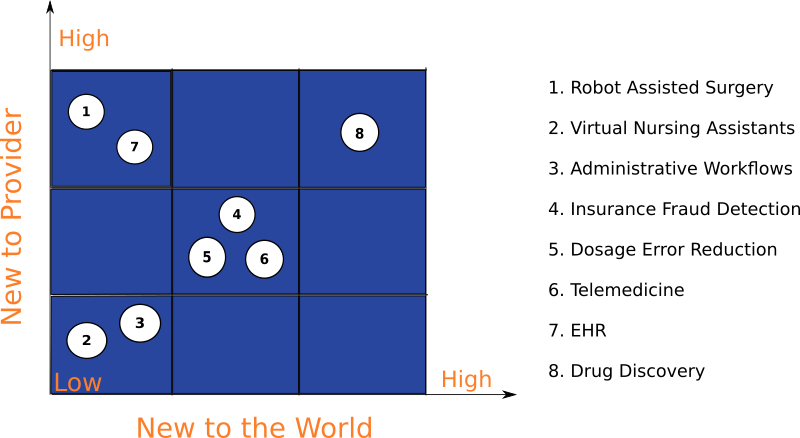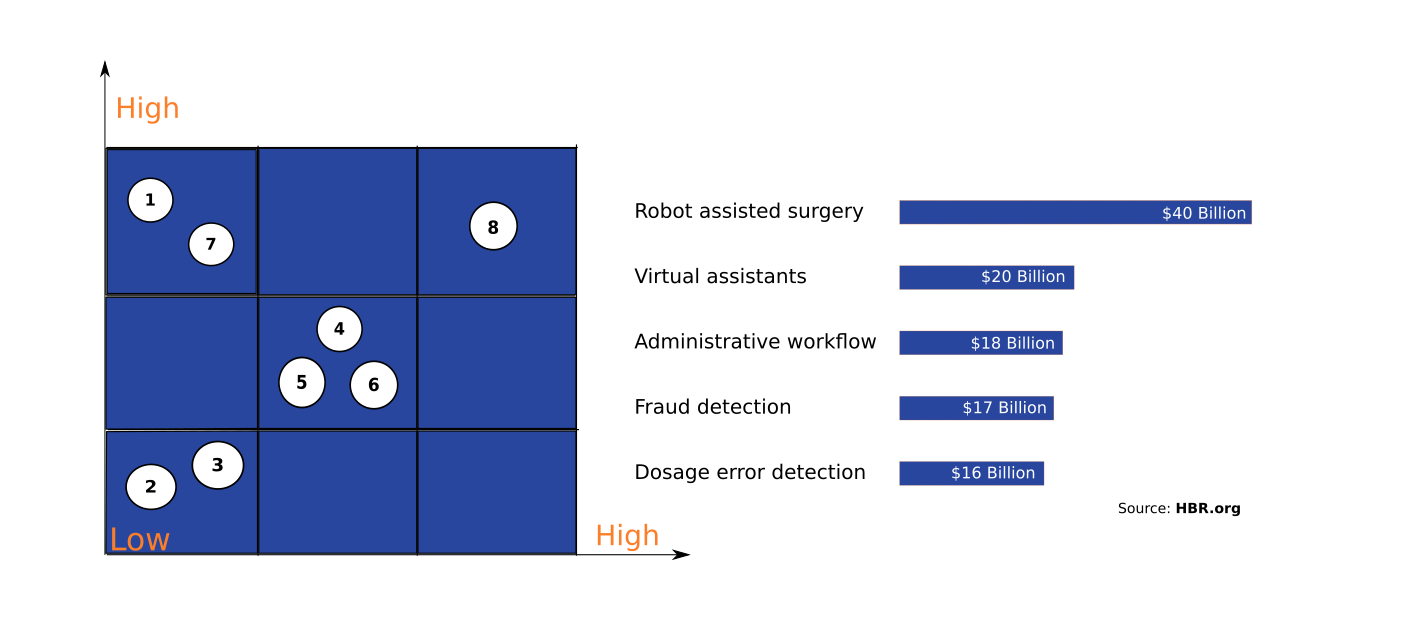More than a score articles have been published online that speak of the applications of Artificial Intelligence in Healthcare. Some of them have done an in-depth study of these AI applications and also, have projected savings in terms of time and money.
 For example, a Harvard study has identified top 10 AI applications with projected savings – some of which are depicted in the adjacent visualization.
For example, a Harvard study has identified top 10 AI applications with projected savings – some of which are depicted in the adjacent visualization.
As a Healthcare provider, if you are planning to use Artificial Intelligence, where do you start?
Do you start with the maximum projected savings that might result from a certain AI application? Or,
Do you start with the major pain points in providing Patient care and see how AI could address them? Or,
Do you start with your employees capability in designing and implementing new products and services? Or,
Do you start based on what products your organization has successfully launched over the previous years? Or,
Do you start based on the volume of data that your organization has accumulated over years and looking to extract actionable intelligence from that data using AI?
Commercial Off The Shelf (COTS) IT applications might help in automating certain mundane tasks, like Patient’s registration etc.. But, to design and implement an AI application, it requires data that is specific to the Healthcare provider. In other words, it implies a need for the AI implementation partner to work in tandem with a subject matter expert from the Healthcare provider.
For example, for designing a simple Virtual Nursing Assistant using Artificial Intelligence, it is important to know the type of questions (with variations) posed by patients or other vendors - all of which are specific to the Healthcare provider.
Hence, it seems logical to me to start building AI applications either based on employees capability or the new products and services launched previously.
Note: I’m using the word capability as an amalgam of Knowledge (what), Skills (how) and Abilities (where/ wisdom to apply knowledge and skills).
With a clear understanding from where to start, next question is what Artificial Intelligence application you could start designing and implementing?
 For both the starting points i.e. Employees capability and Previous launches of new products/services, I suggest to use the perspective of Degree of Newness. This perspective was proposed in 1980s by Booz-Allen & Hamilton for categorizing innovations or new products (incl. services). This perspective is presented in the adjacent sketch.
For both the starting points i.e. Employees capability and Previous launches of new products/services, I suggest to use the perspective of Degree of Newness. This perspective was proposed in 1980s by Booz-Allen & Hamilton for categorizing innovations or new products (incl. services). This perspective is presented in the adjacent sketch.
As an example of how to categorize AI applications across the Degree of Newness, we use the below AI applications as researched by the Harvard team in their study and the Engineering.com article:
They use AI-assisted robotics that can analyze data from pre-op medical records to physically guide the surgeon’s instrument in real-time during a procedure.
These AI applications interact with patients, ask them questions about their health, assess their symptoms and provide quick answers.
These are AI-based technologies, such as voice-to-text transcription, that can improve administrative workflows and eliminate time-consuming non-patient care activities, such as writing chart notes, filling prescriptions, and ordering tests.
They use AI-supported data mining to search Medicare claims for patterns associated with medical reimbursement fraud.
They include using AI to correctly determine the correct dose of drugs to administer to patients.
These include AI that is capable of interacting with patients and making accurate diagnoses at the screening process as part of providing Telemedicine services. Such applications will enable the Telemedicine programs to grow in availability and scope – especially for patients in remote areas.
These include AI applications that parse through vast, disparate EHR data and identifying patterns faster and with greater precision compared to human researchers and analysts.
They include using AI for making the process of new drug discovery easier and faster by finding new insights into a disease, identifying and testing drug compounds to determine their possible beneficial effects, and repurposing existing drugs against different diseases.
For a detailed explanation of each of the application with projected savings for some, pl refer to the Harvard’s study here and Engineering.com article here.
The chart below shows how AI applications as listed above could be categorized across Degree of Newness.

A similar chart that categorizes the previous launches of new products and services should be built and compared with the above chart that was built using AI applications.
The result of comparison might suggest the specific AI application that your organization could start with or at least provide guidance on what type of AI application you could start with.
Additionally, for assessing employees capability, I suggest you to identify your organization’s core competencies.

